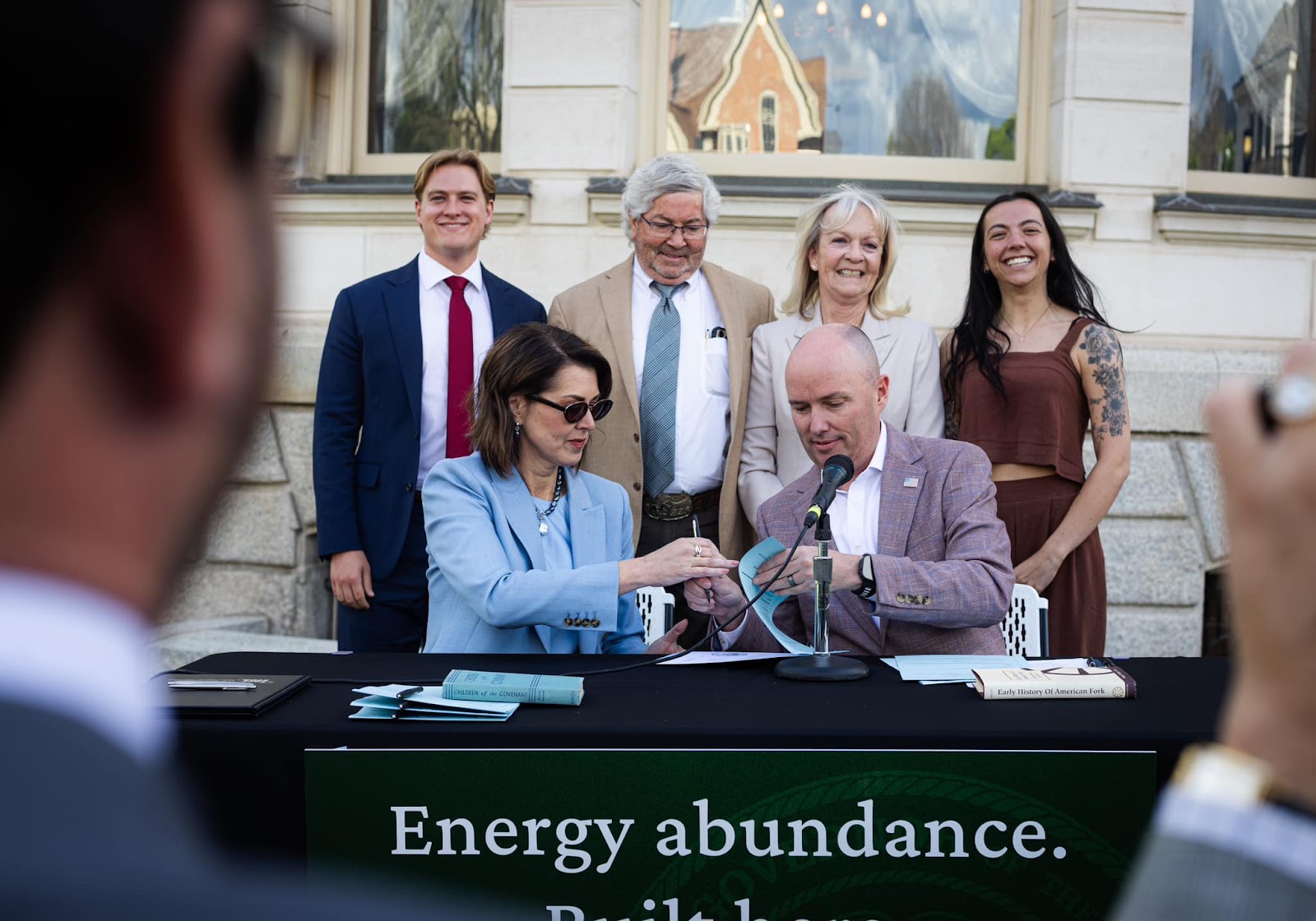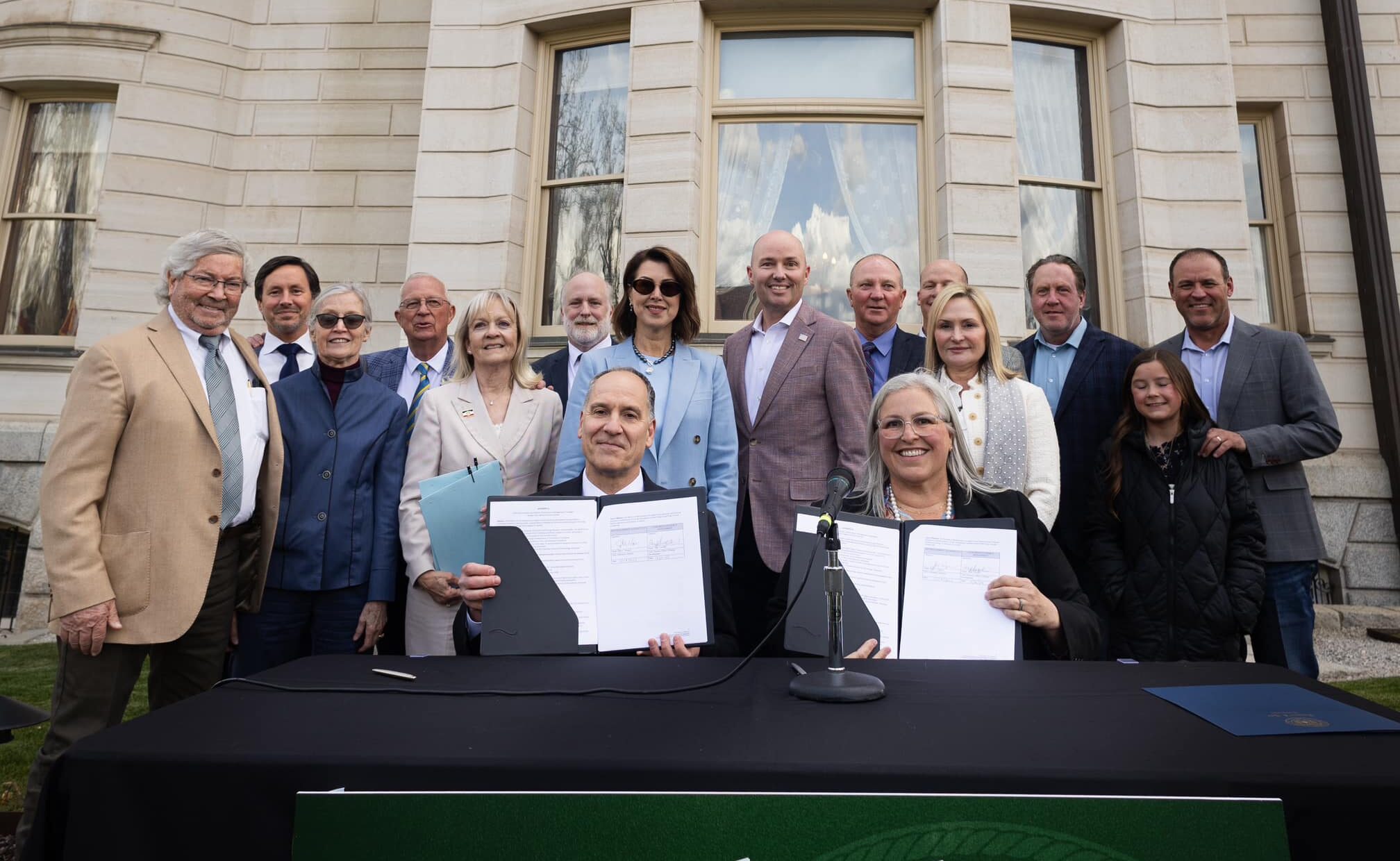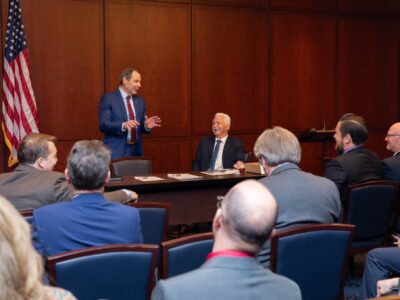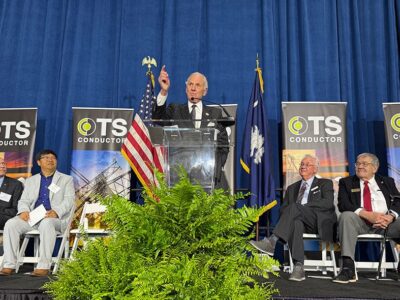Last October at the One Utah Summit, Gov. Spencer Cox revealed that Operation Gigawatt will double the state’s power production within a decade, adding four more gigawatts of capacity. He announced this in the face of increasing power demand from a growing population, the transition to electric appliances, machinery, and vehicles, and the expansion of industries like artificial intelligence and data centers. According to the Electric Power Research Institute, data centers alone could use 9% of domestic electricity by the decade’s end. Combined with the retirement of old baseload resources, this skyrocketing demand could cause a future energy deficit if left unaddressed.
Therefore, the initiative seeks to avert a future problem and seize the opportunity to continue Utah’s energy leadership. “Energy is the engine that drives our society forward. We need more energy at a time when our supply is decreasing. We will build upon Utah’s ‘any of the above’ energy policy with a ‘more of the above’ approach by doubling our energy-generating capacity over the next 10 years,” Gov. Cox elaborated at the One Utah Summit.
“We have a generational opportunity before us, and Operation Gigawatt will honor the legacy we’ve inherited by ensuring our energy is reliable, affordable, secure and clean for generations to come,” the Utah Office of Energy Development added on its website.

Photo Courtesy One Utah Summit
Utah is ready to expand its energy production. Emy Faulkner Lesofski, director of the Office of Energy Development and Gov. Cox’s energy advisor, told Utah Business: “Our geography has gifted us with a wide range of resources,” she says. “We are only one of seven states that generate utility-scale geothermal power, and Operation Gigawatt will further develop our state’s untapped but substantial geothermal potential. Eight out of 10 homes in Utah are heated with natural gas; we were No. 14 in the nation for solar generating capacity. You can see that we use all our resources, and we need more of these resources if we are going to get to that additional 4GW.”
“Operation Gigawatt has four key objectives,” Lesofski elaborated, which “are intended to secure baseload, get energy to where consumers and industry need it, and foster innovation, taking things from the lab to the market.” First, the initiative aims to increase transmission capacity to ensure more power generation sources can be connected to the grid and sent to areas where it is needed most. Second, it will secure and expand the energy resources currently in operation in Utah and build additional sustainable generation.
Third, Operation Gigawatt plans to enhance the state’s policies that support clean energy resources, particularly geothermal and nuclear energy. Already, the state has three fully operational geothermal plants in Blundell, Cove Fort, and Thermo, two of which are planning expansions that will double their power generation. There are also two planned facilities in Beaver County, with five others across the state in the research and development process. Beaver County Commissioner Tammy Pearson said, “Economically, it’s a huge infrastructure investment. Lots of property taxes and stuff that are going to come into that. The jobs that come in are sustainable and higher wages.”
Meanwhile, as the state explores the use of nuclear power, the Utah Office of Energy Development estimates that “converting retiring coal power plants into nuclear power plants can cut capital costs by an estimated 15% to 35% through the reuse of existing infrastructure.” Most recently, Utah teamed up with Valar Atomics and announced a partnership to develop a new nuclear test reactor in Emory County. Gov. Cox highlighted the project, “It’s going to create jobs. It’s going to create clean energy and cheap energy for the people of the United States. And we couldn’t be more excited to be a major player in this industry.”
Finally, Utah plans to invest in innovation and research, aligning with those energy policies. Dr. Bryony Richards, a senior research scientist at the Energy & Geoscience Institute at the University of Utah, is one of the minds working on this type of research. “We’re examining historical mine waste for valuable minerals, which could supply the raw materials needed to build a resilient energy infrastructure. By integrating such projects into the energy supply chain, Utah is enhancing its ability to support technologies critical to the energy transition, such as advanced batteries and hydrogen electrolyzers, again feeding back into Utah’s energy cycle,” she described to Utah Business.

Photo Courtesy Utah FORGE
Numerous industries stand to benefit from Operation Gigawatt. Dr. Richards noted, “Energy-intensive industries such as artificial intelligence, data centers and advanced manufacturing stand to gain significantly from this expansion, as they require consistent, high-capacity energy to sustain operations.”
Tom Freeman, vice chair at Colliers Utah, also highlighted the commercial real estate sector, which is particularly important for Utah’s economy: “The commercial real estate sector is the largest economic tool that the state of Utah has … [and is] responsible for the velocity and opportunities that exist to attract occupiers, bringing in billions of dollars of investment to the state every year… Without an investment into our utility sector, our economic development is going to come to a screeching halt.”
Utah residents will also benefit from lower energy costs as a result of the initiative. Freeman expanded, “There’s already been a large increase [in energy costs] to the end consumer. The consumer is you and me — people that turn on their lights or use the garbage disposal. We’re seeing increases in energy bills. That’s not keeping us in a competitive state, and it will absolutely stymie our ability to continue to be a leader. Residents benefit from the stabilization of energy prices and increased grid reliability, reducing the risk of blackouts or price spikes.”
Operation Gigawatt will also contribute to the country’s energy dominance and national security. Gov Cox explained, “We are in a global arms race right now against China and Russia and others when it comes to building AI, whether it’s good or bad, it’s happening. And we have to keep up.”

Photo Courtesy The AES Corporation
In April, Gov. Cox signed legislation passed during the 2025 General Legislative Session and a memorandum of understanding with Idaho National Laboratory, which are critical to advancing Operation Gigawatt. Utah Sen. Scott Sandall (R-UT-01), Utah Sen. Ann Miller (R-UT-05), Utah Rep. Carl Albrecht (R-UT-70), Utah Rep. Christine Watkins (R-UT-67), and Utah Rep. Jefferson Moss (R-UT-51) were among the important public figures in attendance at the event at the Governor’s Mansion. In a social media post, he reflected on these new laws and partnerships: “Today, we celebrated some major energy wins for Utah — expanding transmission, advancing nuclear power, and strengthening our grid.”
At 2024’s One Utah Summit, Gov. Cox said, “Operation Gigawatt is critical to preserving our quality of life and ensuring strong economic growth. It puts Utah in a position to lead the country in energy development, secure our energy future and remain a net energy exporter while diversifying and expanding our energy resources.”

Photo Courtesy Gov. Spencer J. Cox





